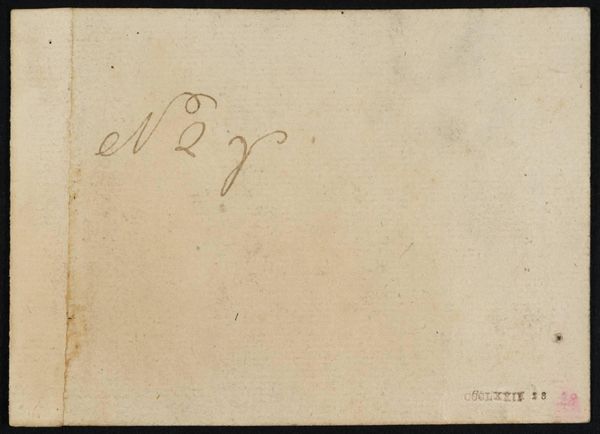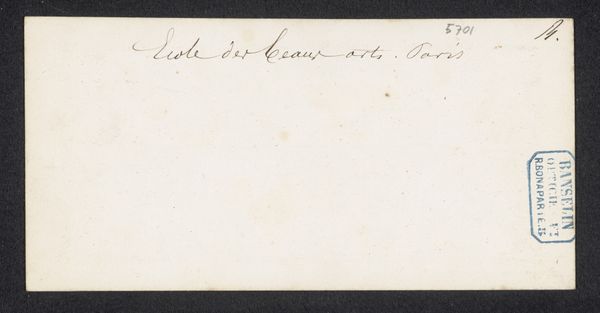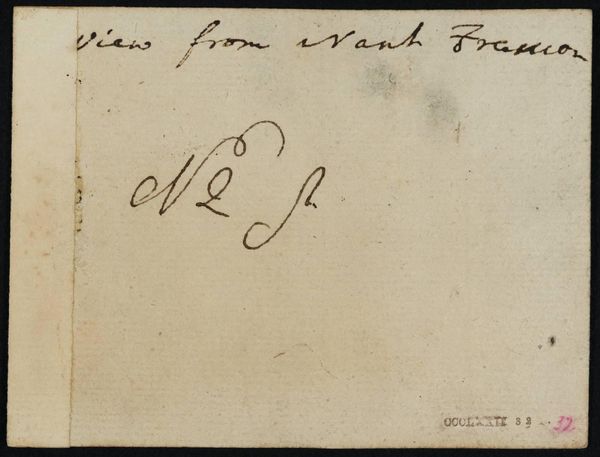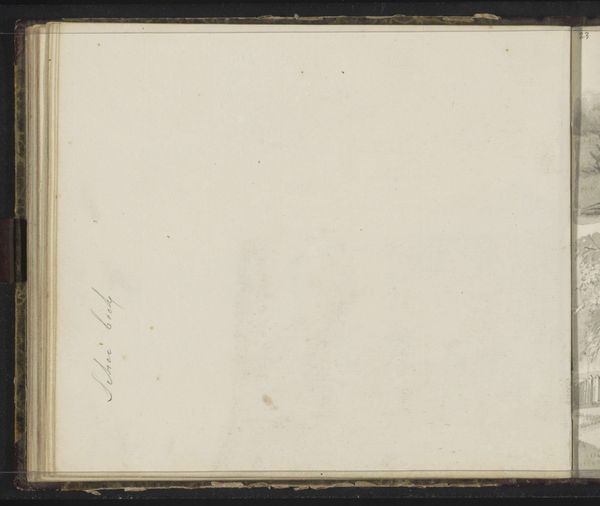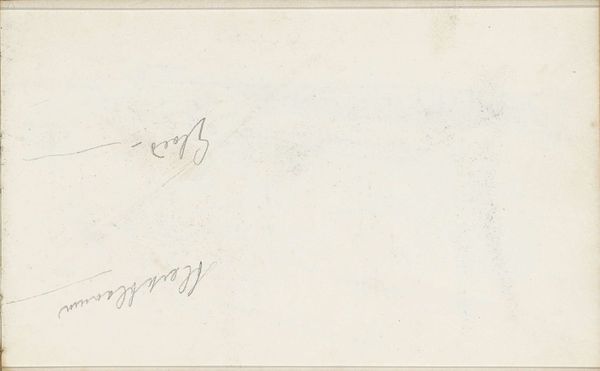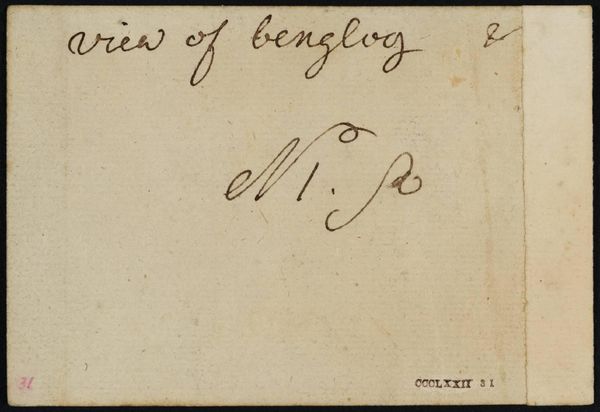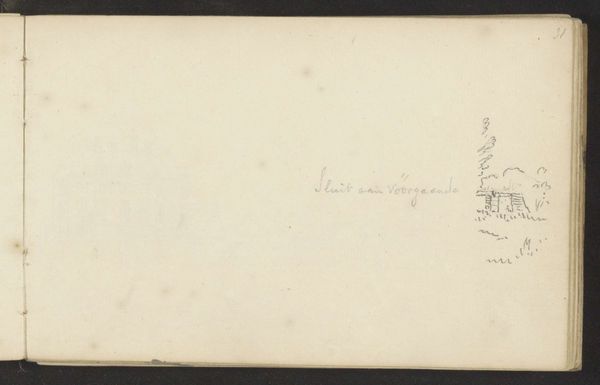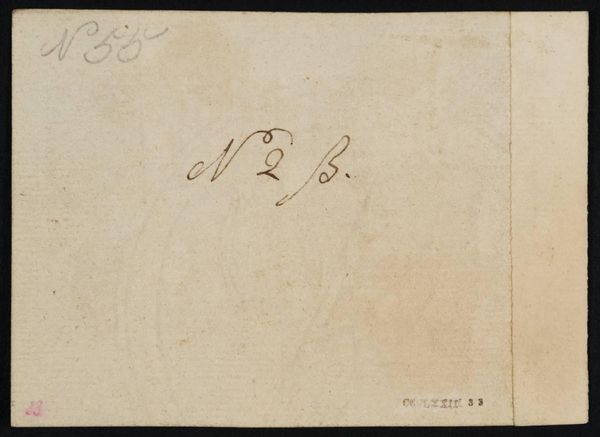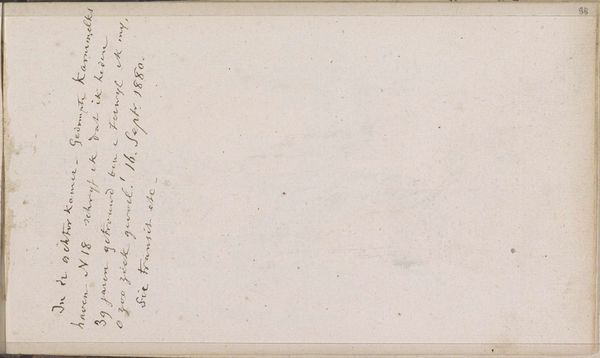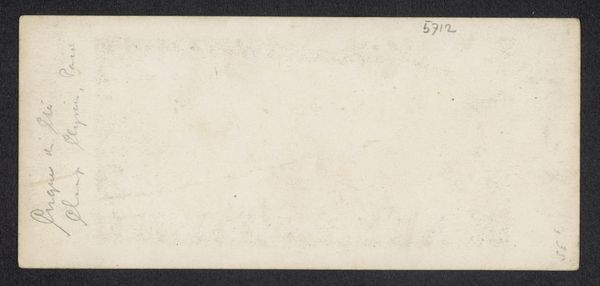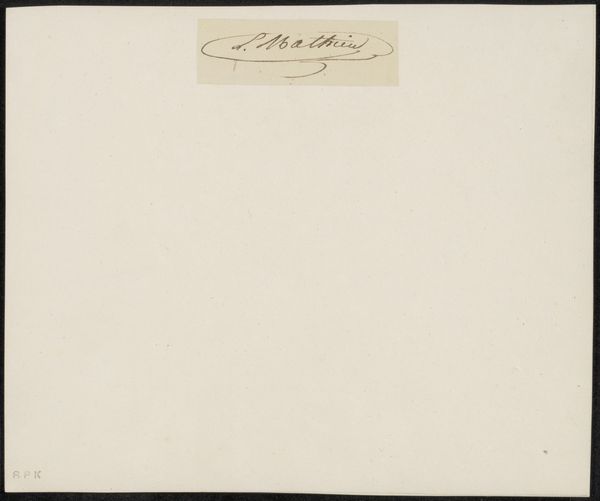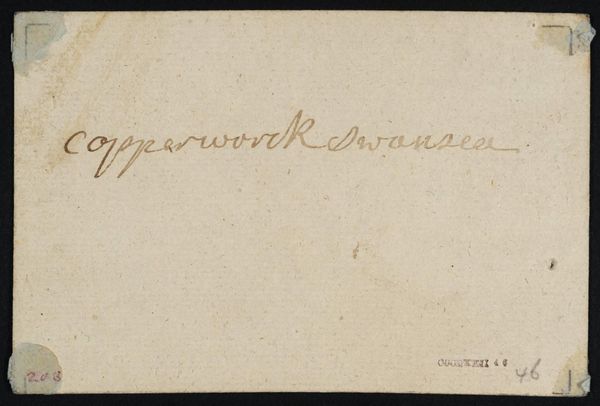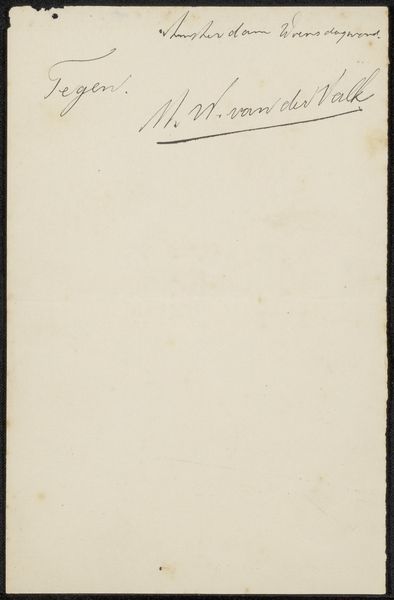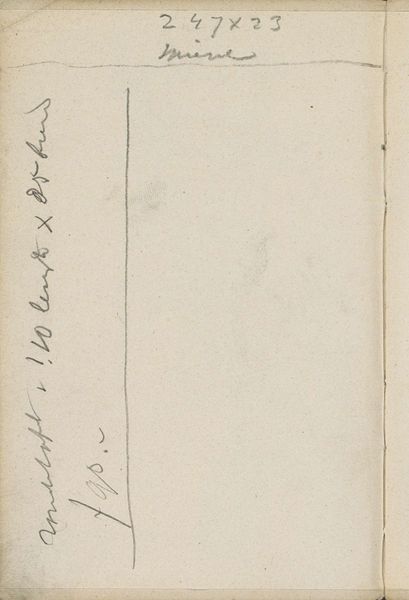![[inscriptions not by Turner] by Philip James De Loutherbourg](/_next/image?url=https%3A%2F%2Fd2w8kbdekdi1gv.cloudfront.net%2FeyJidWNrZXQiOiAiYXJ0ZXJhLWltYWdlcy1idWNrZXQiLCAia2V5IjogImFydHdvcmtzL2RmM2VjZWEwLWRlNmMtNDdlYi05OTE5LWRjNzc4MGE2ZTNmYy9kZjNlY2VhMC1kZTZjLTQ3ZWItOTkxOS1kYzc3ODBhNmUzZmNfZnVsbC5qcGciLCAiZWRpdHMiOiB7InJlc2l6ZSI6IHsid2lkdGgiOiAxOTIwLCAiaGVpZ2h0IjogMTkyMCwgImZpdCI6ICJpbnNpZGUifX19&w=3840&q=75)
Dimensions: support: 80 x 123 mm
Copyright: CC-BY-NC-ND 4.0 DEED, Photo: Tate
Curator: At the Tate, we have "[inscriptions not by Turner]" by Philip James De Loutherbourg, whose life spanned much of the 18th century. Editor: The aged paper and delicate handwriting evoke a sense of historical intimacy. It seems to serve as a portal to another era, with the markings themselves acting as enigmatic symbols. Curator: De Loutherbourg, situated amidst revolutionary shifts, embraced Enlightenment ideals alongside Romanticism, which profoundly influenced his approach to visualizing the natural world and its intersection with society. The inscription suggests a later categorization, raising questions about its purpose. Editor: The numbers inscribed remind me of inventory markings, possibly representing a cataloging system of some sort. Could these numbers also hint at a lost order, a forgotten logic that once imbued this seemingly simple page with meaning? Curator: Precisely. The cultural act of cataloging, then as now, reflects the intersectional need to control and comprehend the world. Who inscribed these numbers and why becomes a lens into power dynamics of that time. Editor: That’s fascinating. It's a blank canvas imbued with history, its symbolism amplified by its very emptiness. Curator: Indeed. It reminds us that even seemingly insignificant objects can bear witness to profound shifts in perspective.
